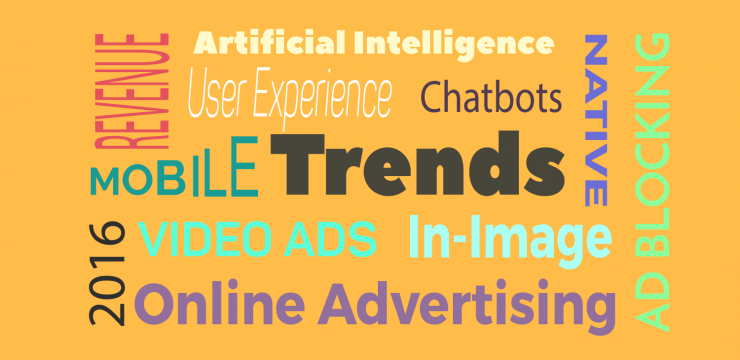Paying careful attention to key advertising trends is a key to success for digital publishers in the age of ad blocking and unlimited free content.
Publishers that want to grow their revenues and expand their audiences, must understand the rapidly transforming world of online advertising. Mary Meeker recently released her annual Internet Trends report, one of the most anticipated reports in the tech world. The report touches on many important trends and insights in online advertising, many of which are especially relevant to publishers who should pay careful attention to them and consider their implications for the industry.
I have selected some of the most relevant and essential trends publishers should pay attention to from Meeker’s 213 slide report:
1. Ad blocking usage is growing.
According to research from PageFair, 400 million global users block ads on mobile, while 200 million block ads on their desktops. Not only is 600 million a startling number, but it’s interesting to note that ad blocking is used far more on smartphones than on desktops.
There is no question that ad blocking presents a tremendous issue for publishers. Fortunately, the news isn’t all bad. There are advertising solutions on the market such as in-image and native advertising, which provide a non-intrusive and smooth user experience. If users see ads that are relevant, engaging, and ensure excellent UX, they will be far less likely to download ad blocking software.
2. Video ads work, but avoid pre-roll.
Meeker highlights that 62% of people surveyed said they were annoyed by pre-roll video ads. With UX gaining increasing importance, publishers should think about scaling back on their use of pre-roll video ads on their websites. However, native video advertising has been found to perform far better and to have little effect on UX. In fact, according to research by Sharethrough, users that see native video ads are far less likely to have negative attitudes towards a brand than those exposed to pre-roll video ads.
3. The first rule of online advertising: mobile, mobile, mobile.
With the explosion of smartphone use, this one is obvious. However, Meeker brings numbers that really highlight the strength of mobile. From 2014 to 2015, desktop ad revenue grew by 5% while mobile ad revenue grew by 66%. Publishers that want to increase their revenues will need to shift their focus towards mobile. They will need to build sites that are equipped to work on smartphones as well as use ad formats that perform both visually and competently on mobile.

The three trends I’ve highlighted stood out to me from Meeker’s report, however, there are two additional trends not emphasized by Meeker that I believe are important for publishers to watch closely:
4. Native Advertising.
With ad blocking use on the rise, native advertising is gaining traction as a possible solution to the rapidly growing problem. Native ads are designed to match the look and feel of surrounding content, ensuring higher viewability and solving the banner blindness issue. According to a 2015 report by the Tow-Knight Center for Entrepreneurial Journalism, native advertising has grown significantly in recent years as a direct result of ad blocking.
5. Chatbots.
Major publishers such as CNN, Business Insider, and Quartz have embraced the chatbot trend. There is no doubt that the future of publishing and online advertising is heading towards the adoption of artificial intelligence, however there are many questions that publishers need to ask before jumping headfirst into this trend: Could chatbots mean decreased ad revenues? Will bots drive less or more traffic to publishers’ sites? And, how long will it be before chatbots actually work as they are supposed to?
The #1 key takeaway?
Publishers face substantial challenges in the coming years and to prosper, they will need to adopt advertising technologies that can adapt well to trends in the industry. Smart advertising solutions such as in-image advertising and native advertising will help publishers to better target users, while ensuring a great user experience. Smarter technologies will be the only way to see better results.
What do you consider to be the biggest trends shaping the digital publishing industry? Let us know in the comments below.

